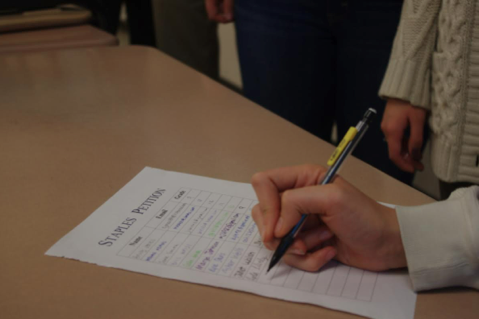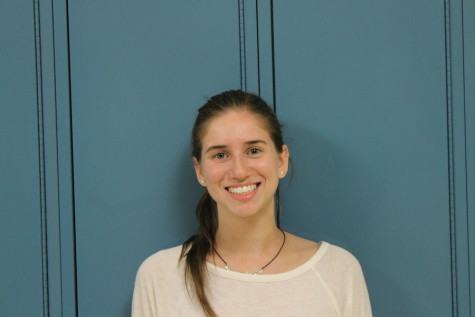
Petitions have recently become somewhat of an alternative voice for the Staples student body, and a seemingly successful one at that.
There was the petition last year that went against changes to the sandwich line, the petition last year protesting the close proximity between the Physics A final project and the final exam. This year, there was another requesting that the dates for midterms be pushed back.
Although each of these petitions was addressed and the problems fixed, Principal John Dodig does not credit the changes to the hundreds of signatures.
“My personal style is I don’t like petitions. They have the opposite effect on me because it puts the receivers in a corner,” Dodig said.
Julia Kempner ’17 started the petition to make midterms later since they originally fell just three days after students returned from winter break. The petition raised about 500 signatures in one day.
“The point was to show [the administration] what students feel so that they could take the well-being of our own vacation into consideration,” Kempner said.
Kempner chose to create a petition rather than just talking to the administration because she believes that the administration would not have taken her seriously if she spoke alone.
“Petitions show masses of people agreeing,” Kempner said. “With this topic of switching midterms to a different date, talking to the administration would just sound like I was a kid who just wanted to relax on my break,” she added.
However, before the petition was created, the dates of midterms were already in the midst of being changed by Collaborative Team, a group of teachers, students and administrators who meet once a week to discuss ways to better the Staples environment.
Nevertheless, petitions don’t always result in immediate action. With the Physics A petition last year, the change will be seen only this year. Instead of leaving little recovery time between the final exam date and the final project due date, the teachers have decided to have the final exam take place before the final project to reduce stress felt by students last year.
Ken Asada ’15, who created the Physics A petition, was looking to show the department that many students were feeling overwhelmed.
“If over one hundred students say, ‘Hey, this is too much for us,’ then hopefully that sends a message to the physics department for the next school year,” Asada said.
It was the idea for change, not the actual signatures, though, that the teachers took into account while making the decision to spread out the Physics
A due dates. Actually, many teachers would have preferred for the idea to be presented in a different manner.
Science teacher Nathaniel Dewey, who teaches a Physics A class, was surprised by the petition.
Dewey explained that none of the teachers had heard any students complain. He and the other science teachers only heard through the grapevine that there was a petition going around.
“They did have a point, but the petition, we just felt, was the wrong way to go about that,” Dewey said. “We would have rather heard from students directly to hear their feedback,” he added.
Student Assembly President Jennie Blumenfeld, who is also part of the Collaborative Team, understands the teachers’ and administrators’ frustration.
“When an issue is addressed face-to-face, it’s much easier for [Dodig] and the administration to understand the students’ thoughts and feelings,” she said. “An argument isn’t as effective when it’s just a bunch of signatures,” Blumenfeld added.
Dodig encourages students to set up a meeting with him if they have an opinion that they would like to voice, saying that is preferable to showing him a myriad of signatures.
“I would much have preferred if the very same kids who handed me the petition had just asked to come to see me and talk,” Dodig said.
“I always have time to talk to kids,” he added.













































